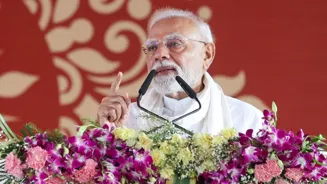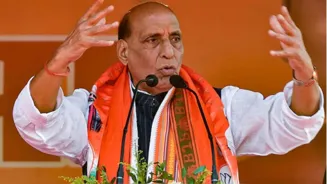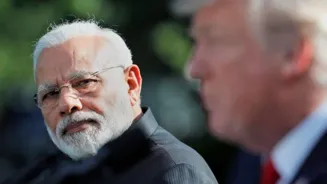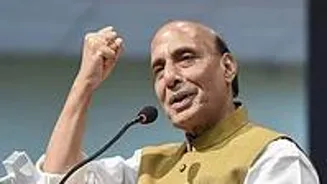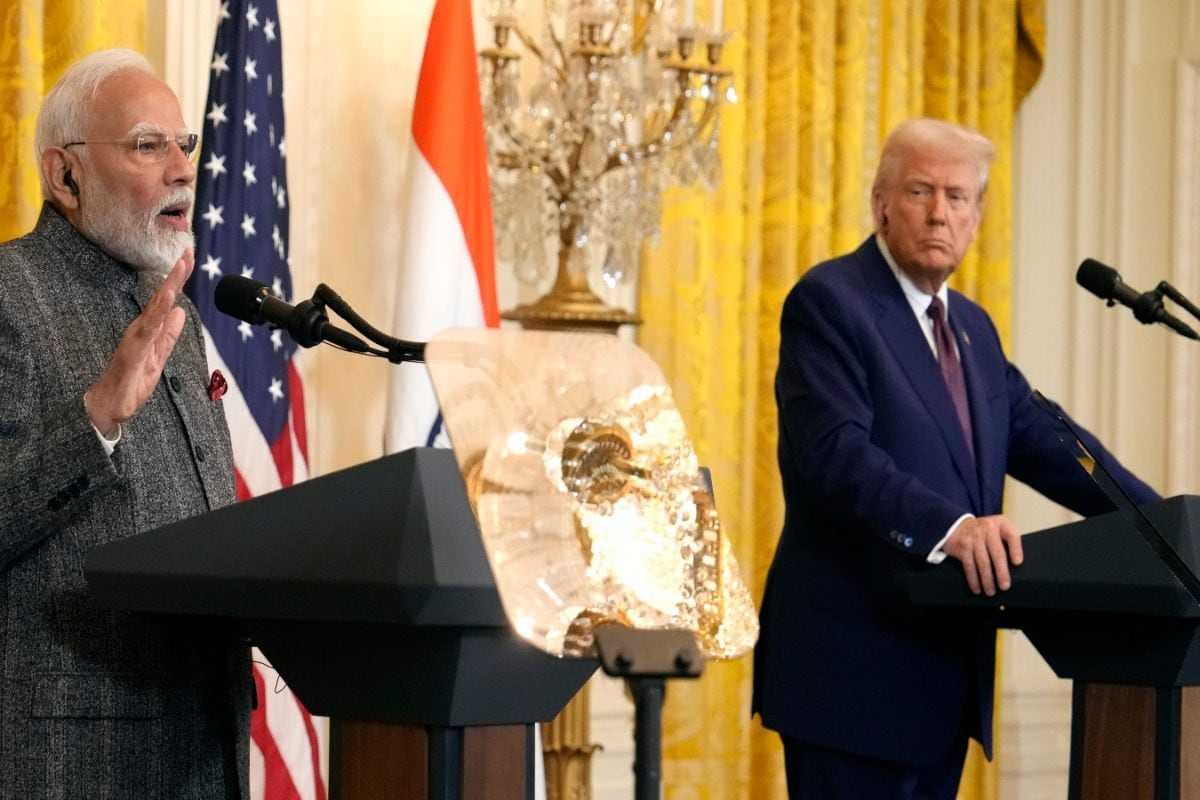In the annals of history, crises have often served as catalysts for profound transformation. The United States’ imposition of irrational and unfair tariffs on Indian goods presents such a pivotal moment
for India. For India, this could well be our ‘New Deal’ moment – a defining period between 1933 and 1939 under President Franklin D. Roosevelt, which reshaped the American economy in the aftermath of the Great Depression.
Far from denting our economy, the current tariff threat can serve as an inflection point, providing an impetus to turbocharge reforms, bolster domestic manufacturing, and deepen self-reliance. As the adage goes, “Never let a good crisis go to waste.” India’s response could not only mitigate short-term hiccups but propel the nation toward sustained high growth, leveraging initiatives like Make in India and Atmanirbhar Bharat as key pillars for economic strength and national security.
A crisis that barely dents us, but hurts the US more
At first glance, the tariffs seem intimidating, threatening to disrupt India’s economic growth. However, a closer examination reveals their minimal impact on India’s GDP. According to Moody’s, a 50% US tariff scenario, simulating the worst-case escalation, could shave just 0.3% off India’s GDP in FY26, primarily through reduced export competitiveness and potential supply chain disruptions. In other words, the potential impact on our $4.30 trillion economy is marginal, easily absorbed by domestic demand and strategic pivots.
This asymmetric impact gives India room to respond strategically rather than defensively. The 1991 economic reforms were born in the midst of a balance-of-payments crisis. Today, with robust reserves, strong macroeconomic fundamentals, and a steady 6.5% growth rate, this presents more of an opportunity than a threat to fast-track transformation.
India’s merchandise exports to the US, while significant at around $80 billion annually in goods like pharmaceuticals, textiles, and engineering products, make up only about 18% of total exports. In addition, the tariffs are expected to impact about 55% of India’s exports, amounting to approximately $48 billion in value, in sectors such as gems and jewellery, textiles, and auto components. The broader trade ecosystem, including services and other markets, buffers the impact.
In fact, the tariffs harm US consumers much more significantly. American households, already dealing with inflation, will face higher prices for everyday imports from India—medicines, apparel, and electronics—that have kept costs low. US industries relying on Indian inputs will experience supply chain disruptions, reducing competitiveness. This self-inflicted wound echoes the protectionist mistakes of the past, like the Smoot-Hawley Tariff Act of 1930, which worsened the Great Depression. For India, the pain is brief; for the US, it’s a boomerang. Protectionist actions in a globalized economy are, in effect, a tax on one’s own people.
India’s Goldilocks Moment
India is in a ‘Goldilocks Moment’, characterised by low inflation, high growth projected at 6.5- 7% for FY25, and a demographic dividend of a young, growing workforce. With over 1.4 billion people, India’s domestic consumption economy is a powerhouse, fuelled by rising middle-class aspirations and rural savings.
Six Pillars of India’s New Deal
In the spirit of the ‘New Deal’, India can reply with an ambitious, coordinated economic plan that transforms adversity into growth:
1. Catalyse Domestic Demand: India’s small and medium towns, along with its vast rural heartland, hold untapped purchasing power. Households in these regions have savings capacity and an appetite for better goods and services. By boosting rural infrastructure, credit availability, and market access, we can unlock this latent demand. Even a moderate uptick in rural and tier-2/3 city consumption can easily offset the 0.3% GDP impact projected by Moody’s.
2. Massive Make in India Drive: The Make in India and Atmanirbhar Bharat initiatives must now be elevated from programs to movements. Expanding the Production Linked Incentive (PLI) framework to targeted product categories, especially those currently imported, will encourage domestic manufacturing at scale. This is not just about import substitution; it’s about building competitive, export-ready industries in electronics, defence, pharmaceuticals, textiles, and more. Over the next five years, this could add multiple percentage points to GDP growth.
3. Diversify Export Markets: Relying heavily on any one major market is a vulnerability. India must pivot aggressively toward non-traditional markets such as Asia Pacific, the Middle East, Africa, and Latin America, where demand is growing and Free Trade Agreements (FTAs) can be negotiated swiftly. Indian exporters, from IT services to agri-products, can gain a first-mover advantage in these regions.
4. Resource Independence and Energy Security: A strong push for domestic exploration of oil, gas, and rare earth minerals is essential to lower our import costs and boost strategic independence. Simultaneously, substantial investments in solar, wind, nuclear, electric vehicles, and battery storage can achieve energy self-sufficiency by 2030. This approach supports both economic and climate objectives, turning sustainability into a competitive edge. This reflects the New Deal’s resource mobilization, similar to the Tennessee Valley Authority’s focus on hydroelectric power.
5. Innovation and Entrepreneurship: Just as the New Deal invested in public works and industrial innovation, India should unleash the animal spirits of entrepreneurship across sectors from agritech and fintech to deep-tech and green tech. This means removing regulatory bottlenecks, enhancing ease of doing business, expanding access to venture and risk capital, and embedding innovation in education and skill development. Our rural population of 600 million is a potential powerhouse; integrating them into the value chain can redefine India’s growth story.
6. Tourism: Tourism, untouched by tariffs, holds immense untapped potential to become India’s largest source of export earnings. Despite our unparalleled natural beauty, rich history, vibrant culture, and diversity, India has only approximately 1.4% of the global share in international tourist arrivals, with around 20 million international visitors out of an estimated 1.45 billion worldwide. In terms of international tourism receipts, India’s share is about 2.3%, with earnings of roughly $37 billion out of a global total of $1.6 trillion.
A massive global “Incredible India” campaign is urgently needed to position India as a premier travel destination. Boosting inbound tourism could easily offset much of the impact of the new 50% US tariffs on goods.
National Security and Economic Sovereignty
This moment also emphasises the national security aspect of economic independence. Over-reliance on imports from any single country, whether for semiconductors, pharmaceuticals, or defence hardware, can be weaponized in times of geopolitical tension. Building domestic capabilities in these vital areas is equally about protecting national security and bolstering the economy.
Conclusion
The phrase “never let a good crisis go to waste” captures the essence of this moment. The tariffs are a disruption, but also a catalyst. Just as the US used the Great Depression to reinvent its economy, India can use this challenge to hardwire resilience, self-reliance, and global competitiveness into its economic DNA.
A targeted, time-bound “India New Deal” can set the country on a sustained 8%+ growth trajectory within three years. By combining domestic demand expansion, manufacturing scale up, export diversification, resource independence, and innovation, India can turn this minor headwind into a strong tailwind for decades of growth.
Whether the tariffs are rolled back in the future is immaterial as the lesson endures. India must read the room and fix for the long term. The US may be a fair-weather partner, but India’s destiny will not be shaped by the weather. It will be shaped by our will. This is no time for internal bickering and politics; we need to unite as a nation and demonstrate our strength and resolve to the world.
If we seize this moment, by Independence Day 2026, we may well send a symbolic thank-you note to the US for inadvertently accelerating India’s Viksit Bharat plans by a decade. The tariffs, designed to hinder, will instead propel India toward a self-reliant, high-growth future. By embracing this crisis, India crafts its own destiny, one of innovation, inclusion, and indomitable spirit.
The author is an angel investor and startup mentor for the Atal Innovation Mission, Government of India, and the Atal Incubation Centre-Rambhau Mhalgi Prabhodhini. He is presently the Convenor (Western Maharashtra) of the BJP Intellectual Cell and has recently co-edited the book Modi’s North East Story. Views expressed in the above piece are personal and solely those of the author. They do not necessarily reflect News18’s views.
